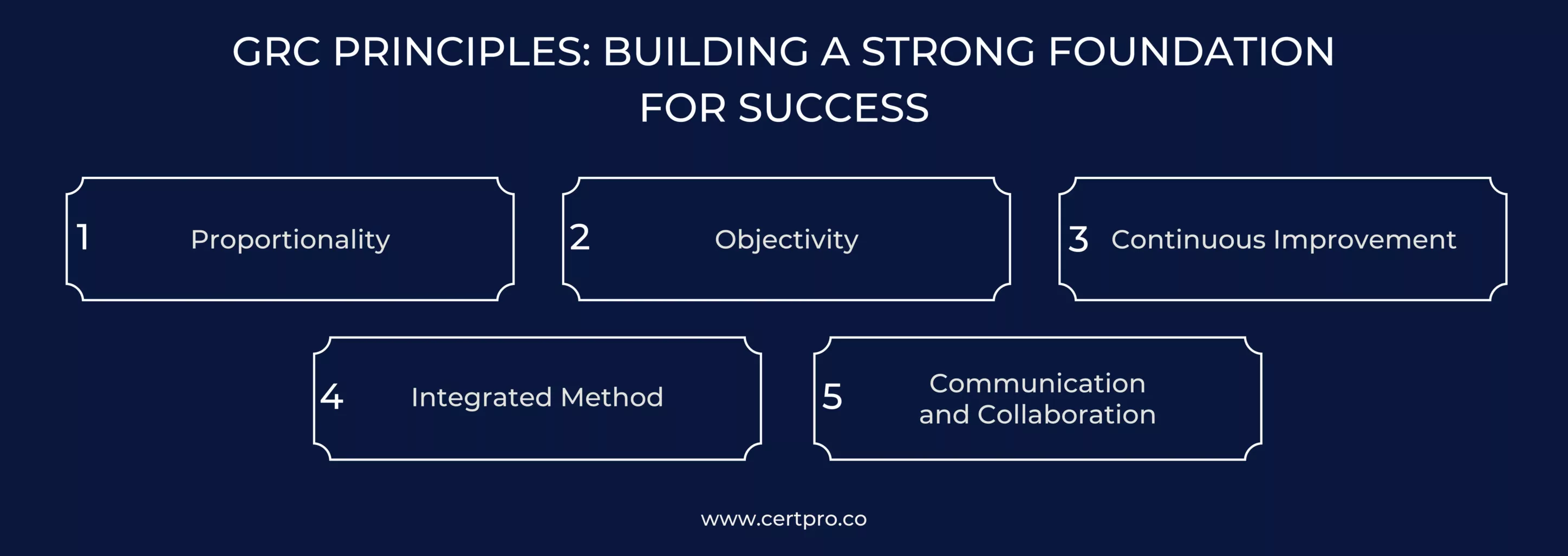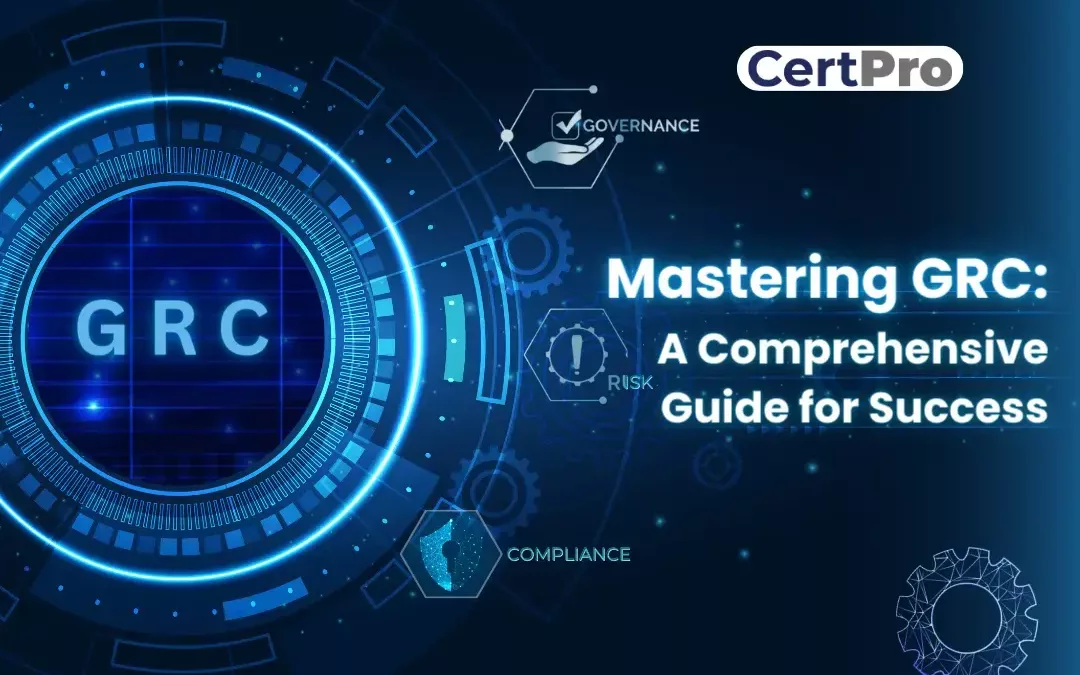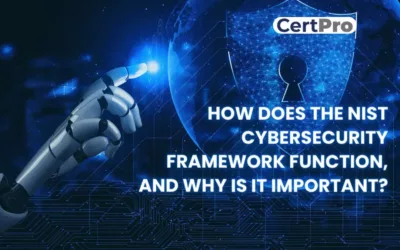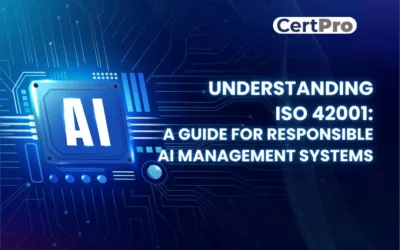Gaining an understanding of Governance Risk and Compliance (GRC) is essential for long-term success in the ever-changing world of modern corporate operations. The cornerstone of a robust business strategy is the junction of governance, risk management, and compliance, or the GRC framework. Gaining a thorough grasp of the compliance GRC landscape is essential for enterprises navigating through a constantly changing regulatory framework with complex compliance obligations and rising risks.
With the purpose of delving deeply into the nuances of Governance Risk and Compliance, this thorough guide offers tactics and insights to help businesses become proficient with the GRC framework. Businesses may build strong frameworks for transparent decision-making, efficiently identify and reduce risks across several domains, and guarantee adherence to moral standards and legal requirements by investigating the essential elements of governance, risk management, and compliance (GRC).
UNDERSTANDING OF GRC
The primary pillar of the GRC, known as governance risk, involves establishing and maintaining effective structures and procedures to ensure transparent decision-making and accountability. The subsequent GRC principles, Risk Management and Compliance, are intricately built upon a solid governance framework. In the realm of governance risk, the second component emphasizes the need for businesses to skillfully locate, evaluate, and mitigate potential risks hindering their objectives. Particularly in an era of technological advancements and increased global connectivity, this extends to a variety of contexts, including the financial, operational, and reputational domains. The third pillar, compliance within GRC principles, is dedicated to adhering to industry norms, ethical principles, and legal and regulatory requirements. A robust compliance framework becomes imperative in navigating the intricate web of regulations, preventing legal consequences, and fostering a culture grounded in integrity. This in-depth explanation aims to shed light on the complexity of governance risk and compliance by focusing on its key elements and challenges. It also provides useful information to help companies do well in this important area and get ready for a world that needs smart governance, careful risk management, and strict compliance.
1. Governance: The Foundation of the GRC: The governance of an organization, which ensures alignment with its objectives and core values, shapes its strategy. This involves establishing communication channels and defining roles and responsibilities. Effective governance forms the structure for risk management and compliance initiatives within the organization.
2. Risk Management: Navigating Uncertainties: Every company faces a variety of hazards, from changes in the market to difficulties with operations. GRC emphasizes the value of proactive risk management by helping businesses recognize, evaluate, and reduce possible hazards. Ensuring sustainable growth requires a strong risk management plan that tackles many issues, including financial risks and cybersecurity difficulties.
3. Compliance: Aligning with Regulations: Adhering to relevant laws, regulations, and industry norms is an essential aspect of ensuring compliance in a company’s operations. Conforming to legal mandates, environmental regulations, industry-specific standards, and data protection laws ensures ethical business conduct and keeps the organization in good standing with regulatory authorities.
WHY DOES THE GRC MATTER?
Organizations can greatly benefit from putting into practice a strong GRC framework. These benefits include:
Enhanced Transparency and Accountability: Facilitated by Governance Risk and Compliance (GRC), heightened transparency and accountability are achieved through the establishment of clearly defined procedures and roles within the GRC framework, creating an environment where individuals are held accountable for their actions, ultimately fostering the building of trust and credibility.
Reduced Risks and Operational Efficiency: Achieving a harmonious balance of reduced risks and heightened operational efficiency, Governance Risk plays a pivotal role as proactive risk mitigation within its components minimizes potential disruptions and strategically optimizes resource allocation, ultimately culminating in an enhancement of overall operational efficiency.
Stronger Financial Performance: By ensuring compliance and steering clear of penalties, the effective implementation of Governance Risk and Compliance (GRC) plays a critical role in fostering sound financial management, consequently contributing to strengthened financial performance and heightened profitability for the organization.
Improved Decision-Making: Through the utilization of data-driven insights that offer a comprehensive understanding of risk exposure and compliance status, enhanced decision-making capabilities are facilitated, ultimately paving the way for strategic business advantages.
Reputation Protection: Safeguarding an organization’s reputation is achieved through the ongoing commitment to compliance and ethical conduct, a practice that not only ensures the maintenance of a positive organizational image but also nurtures stakeholder trust and loyalty.
GRC PRINCIPLES: BUILDING A STRONG FOUNDATION FOR SUCCESS
Essential for establishing a robust foundation for success, adherence to key principles is fundamental in GRC, even as the technical aspects remain crucial. The following outlines these pivotal principles:
1. Proportionality: Using the GRC principle of proportionality means adapting governance risk and compliance efforts to the unique needs of an organization. This is done by using a risk-based approach that prioritizes controls for high-impact risks, figuring out the framework’s size and complexity based on the organization’s size and complexity, and making sure that industry regulations are followed without adding extra internal controls. This makes sure that the GRC implementation is relevant, efficient, and cost-effective.
2. Objectivity: The effectiveness of risk mitigation is enhanced through the objective identification and resolution of risks, allowing for informed decisions on controls and mitigation strategies. This is accomplished by establishing clear criteria for risk assessments and compliance evaluations using standardized tools and methodologies. Making decisions within your GRC framework requires a foundation in objective data and analysis, avoiding personal biases and subjective interpretations to ensure fairness, consistency, transparency, and trust, whereby everyone is held accountable to uniform standards.
3. Continuous Improvement: Embracing continuous improvement in your GRC framework involves conducting regular reviews, gathering stakeholder feedback, utilizing data analytics for periodic audits, adapting to changing regulations, risks, and technology, learning from incidents to identify and prevent weaknesses, and ensuring the framework’s ongoing relevance, effectiveness, and adaptability in the dynamic business environment.
4. Integrated Method: For an integrated approach to Governance Risk and Compliance to work, departments must be able to work together across functions, GRC goals must be aligned with organizational goals, and technology must be used to make data sharing and integrated processes easier. This way, you can get a full picture of the risk landscape, which will help you make better decisions and manage risk more effectively.
5. Communication and Collaboration: For GRC to work, it needs support from everyone in the organization. Focusing on communication and collaboration will increase employee engagement, help find risks early, and create a sense of shared responsibility for following GRC policies and procedures. This will build trust and collective accountability, which is what makes GRC projects successful.

GUIDE TO GRC BEST PRACTICES
It takes more than just checking boxes to have a strong Governance Risk and Compliance (GRC) program. Building a robust, responsible culture and integrating GRC into your business processes flawlessly are prerequisites for being a true GRC master. Use these pointers to go beyond the fundamentals and adopt GRC best practices to achieve true success in the field:
1. Leadership as the Cornerstone: Leadership commitment is essential for GRC’s success. Leading the charge to incorporate GRC into the company culture and show how important it is by allocating resources and taking appropriate action.
- Executive support: Obtain support from the top echelons of the organization. GRC needs to be actively promoted, resources need to be set aside, and leaders need to set an example.
- Effective communication: Clearly state your vision for GRC and emphasize how it will affect corporate goals and objectives.
- Empowerment: Assign responsibility and ownership for GRC to other departments, including operational leaders, compliance officials, and risk management teams.
2. Cultivating a Culture of Risk Awareness: Encourage your company to have a risk-aware culture. Provide workers the freedom to assume accountability for risk management in their jobs and to speak candidly about risks at all levels.
- Open communication: Encourage an atmosphere of open communication where talking about risks is welcomed at all organizational levels, from top management to front-line staff.
- Prioritize Risk Training: Make significant expenditures on thorough training programs to provide staff members with the know-how and abilities to recognize, evaluate, and effectively manage risks related to their jobs.
- Offer Rewards and Recognition: Reward and recognize staff members who take proactive steps to manage risks and who show positive risk-taking behaviors. This will help to create a culture where proactive risk mitigation is highly valued.
3. Constant Training and Improvement: Through frequent training and awareness initiatives, keep staff members up to date on the most recent legal requirements and industry best practices. This guarantees that the culture of the company is embedded with compliance.
- Regular Training Programs: By offering ongoing training to compliance officers, risk managers, and other key staff, you can take the initiative to keep on top of changing rules and industry best practices.
- Regular Awareness Initiatives: Conduct frequent awareness campaigns to make sure that staff members are aware of relevant regulations, policies, and future changes to the law.
- Promote Knowledge Exchange: To utilize collective expertise and build a thorough grasp of risk and compliance landscapes, encourage cooperation and knowledge exchange across departments.
4. Embracing Technology’s Power: Use GRC software to generate meaningful insights, automate repetitive procedures, and streamline processes. This makes it possible to allocate resources more effectively and react to new threats more quickly.
- Implementing GRC Software: Select and make use of GRC software products that automate repetitive work, optimize workflows, and provide immediate access to the risk and compliance state of the company.
- Employ Data Analytics: Make use of data analytics capacity to glean insightful information from risk assessments, audits, and compliance reports in order to support well-informed decision-making.
- Encourage Integration: Ensure that GRC technologies are seamlessly integrated with the business’s present systems, making data gathering, analysis, and reporting procedures more effective.
5. Frequent Evaluations and Audits: Conduct routine risk assessments and audits to gauge how well GRC procedures are working. This aids in pinpointing areas in need of development and guarantees that the company continues to adhere to pertinent laws.
- Regular Audits and Assessments: To identify areas for improvement and determine the effectiveness of GRC procedures, conduct routine audits and risk assessments.
- KPIs, or key performance indicators Monitoring: Establish and keep an eye on key performance indicators (KPIs) to assess the progress made toward overarching business objectives and the effectiveness of GRC activities.
- Comparing Your GRC Program to Industry Leaders and Best Practices: To find areas for additional optimization, do benchmarking activities and compare your program to industry leaders and best practices.
GRC SOFTWARE: YOUR PERSONALIZED TECHNICAL ADVISER:
Explore how GRC software may be transformative.
1. Effective Procedures: Bid goodbye to labor-intensive manual activities as GRC software centralizes data, simplifies workflows, and lowers mistakes to improve overall operational effectiveness.
2. Detailed Visibility: Using dashboards and real-time data, shed light on your organization’s compliance and risk environment and give you a comprehensive picture of where it stands right now.
3. Empowered Risk Management: To successfully detect, evaluate, and prioritize risks and enable your business to proactively handle possible difficulties, make use of the built-in risk assessment tools and mitigation tactics.
4. Simplified Compliance Management: Make sure that rules and internal policies are followed by using automated tracking, reporting, and reminder capabilities to help you navigate the complexity of compliance.
5. Facilitated Collaboration: By offering common platforms and communication capabilities inside the GRC software, encourage cross-departmental cooperation and create a cooperative atmosphere.
CHOOSING THE RIGHT GRC SOFTWARE:
A careful analysis is necessary to make the best decision, considering the abundance of possibilities accessible. Keep in mind these important elements:
1. Tailored to Your Requirements: Take into account variables including your organization’s size, industry, and particular GRC landscape difficulties when matching the software’s functionality to your demands.
2. Functionality: Check to see if the program has the features that are necessary for your company, such as comprehensive reporting capabilities, integrated modules, and customizable processes.
3. Scalability: Select a system that can easily grow with your organization’s changing needs and demonstrates flexibility.
4. Easy-to-Use Design: Give top priority to software that is easy for your team to use, has an intuitive design, and provides sufficient training materials.
5. Integration Capabilities: To improve overall operational efficiency, make sure the selected software interacts easily with your current IT infrastructure and other business systems.
6. Security Protocols: Pick a supplier who has a track record of putting strong protocols in place, protecting confidential information, and making sure that industry norms are followed.
Popular GRC Software Solutions:
- SAP GRC
- Oracle GRC
- IBM Security Guardium
- PwC Arc GRC
- ZenGRC
- AuditBoard
- OneTrust
As a result, understanding Governance, Risk, and Compliance (GRC) goes beyond only adhering to legal requirements. The integration of GRC into operations is highlighted in this handbook, which promotes a resilient culture. Organizations may traverse complexity, manage risks, and assure compliance by utilizing GRC software, GRC best practices, and continuous improvement. This provides a blueprint for exceeding GRC expectations and constructing long-term success in the fast-paced business environment of today.
FAQ
How does GRC software streamline business processes?
GRC software automates routine tasks, centralizes data, and provides real-time visibility into risks and compliance, leading to improved efficiency and reduced errors.
What are the key principles of GRC, and why are they important?
The key principles of GRC include proportionality, objectivity, continuous improvement, and an integrated approach. They are crucial for building a strong foundation, ensuring relevance, and adapting to a dynamic business environment.
What are the key components of GRC software, and how do they contribute to success?
GRC software includes features for streamlined processes, enhanced visibility, risk management, compliance management, and collaboration. These components contribute to success by optimizing operations and ensuring adherence to standards.
How does GRC contribute to financial performance?
GRC ensures compliance, minimizing legal risks and penalties, leading to sound financial management and improved profitability for the organization.
How does GRC protect an organization's reputation?
GRC safeguards an organization’s reputation by ensuring ongoing compliance, ethical conduct, and stakeholder trust, creating a positive organizational image.

About the Author
BHOOMIKA JOIS
Bhoomika Jois is a creative content writer specializing in compliance, ISO 27001, GDPR, and SOC 2. As a Social Media Marketing Specialist, she amplifies her engaging content. Bhoomika’s knack for simplifying complex topics makes compliance and cybersecurity accessible to all.
HOW DOES THE NIST CYBERSECURITY FRAMEWORK FUNCTION, AND WHY IS IT IMPORTANT?
Emerging cyber threats make cybersecurity an essential consideration for organizations handling and managing data. In this regard, the NIST cybersecurity framework applies to improving your cybersecurity program. It is a set of guidelines that helps improve your...
UNDERSTANDING ISO 42001: A GUIDE FOR RESPONSIBLE AI MANAGEMENT SYSTEMS
The invention of artificial intelligence (AI) has changed the operational processes of many industries. However, the rapid growth of technology increases ethical, security, and privacy-related concerns. Therefore, the International Organization for Standardization...
EUROPEAN UNION’S ARTIFICIAL INTELLIGENCE ACT: HOW THIS GROUNDBREAKING LAW AFFECTS YOUR BUSINESS
Nowadays, Artificial Intelligence (AI) is transforming our lives exceptionally well. AI is now streamlining healthcare services, providing virtual assistance, and fulfilling queries. Technologies have boons and curses. Similarly, AI creates many concerns about...




